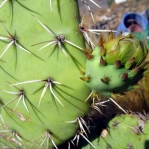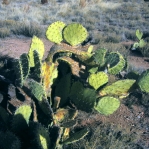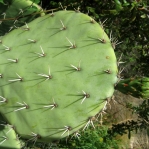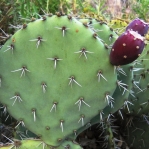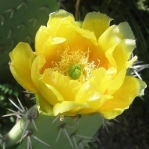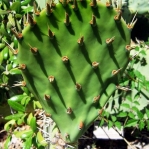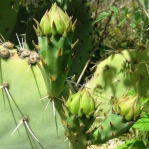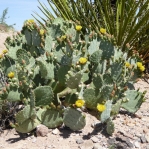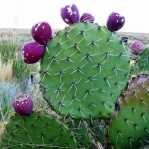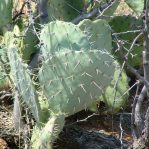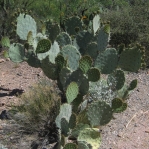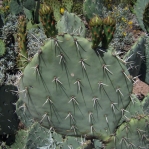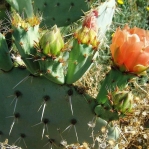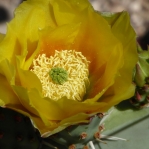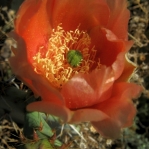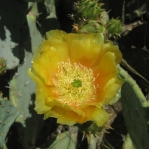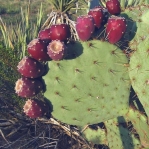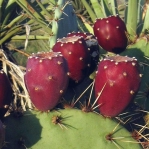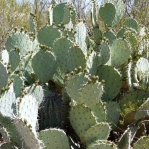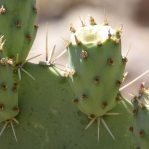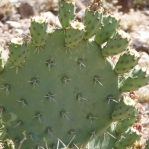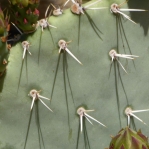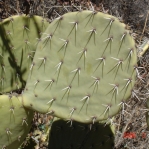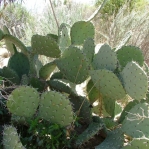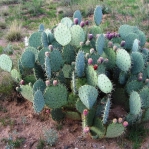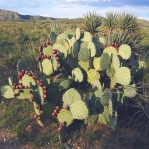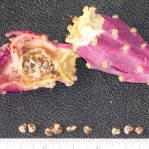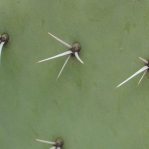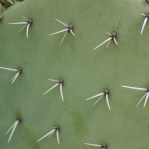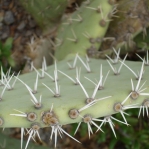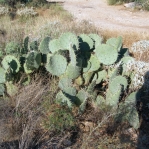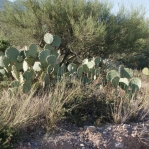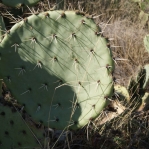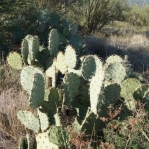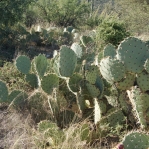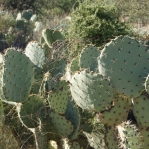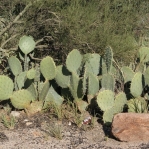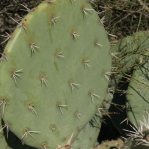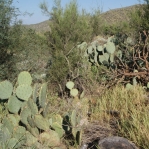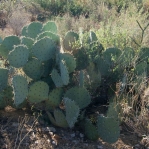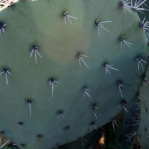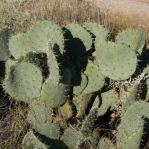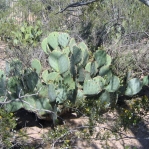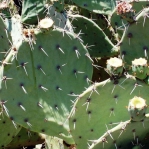
Griffiths, Annual Report of the Missouri Botanical Garden 19: 266, 1908
O. discata has some similarities with O. engelmannii
Original Description
What is Opuntia discata?
Opuntia discata is a handsome, large prickly pear cactus. It is ascending and compact to 1-1.4 m tall and perhaps the same width. The distinctive, white spines provide beauty and character.
Details
Plants are compactly branched. O. discata cladodes are often 25-27 cm wide and often circular or broadly obovate, sometimes elliptical. Cladodes are a handsome dark green when young but turn to waxy gray or blue-gray at maturity. Spines are chalky white or dirty white, and reddish-brown or darker towards the very base. A very pale, pink tinge may permeate the whiteness. Overall, however, the spines appear bone-white against the pads, though they may be white or light gray. Spines may be up to 2.5 cm long but more commonly 1-1.5 cm and are present in 2/3 or most areoles. There are 3-5(7) in the uppermost areoles, whereas lower areoles may have a single spine. Spines are erect but not porrect. They extend sideways or downwards from the areole. Few are precisely perpendicular to the pad. Mostly they have a gentle curve outwards or just lean straight outwards. They seldom curve parallel with (or back towards) the cladode, but this has been observed.
The lemon-yellow flowers may darken to orange at the base, or they may change to orange over the day of anthesis. Filaments are greenish-white, the style is white, and the stigma is dark green. Fruit is obovate or pyriform deep, dark red inside and out, about 6-7 cm in length.
O. discata is hexaploid.
Other Notes
O. discata is sometimes confused with O. engelmannii because the two are large, but the former is compact and the latter is a more open prickly pear. O. engelmannii often has a more upright stance than O. discata. Seen side-by-side they are distinct and they don’t interbreed.
Britton and Rose reported that this Opuntia is found on “the foothills and mesas of southern Arizona and northern Sonora, Mexico.” There is some uncertainty about the name, discata. Some interpretations of the literature suggest the species could be called O. microcarpa. Our review suggests that O. discata has precedence as a name.
O. discata is a beautiful plant in larger gardens. It might be cold hardy to zero F or even colder.

